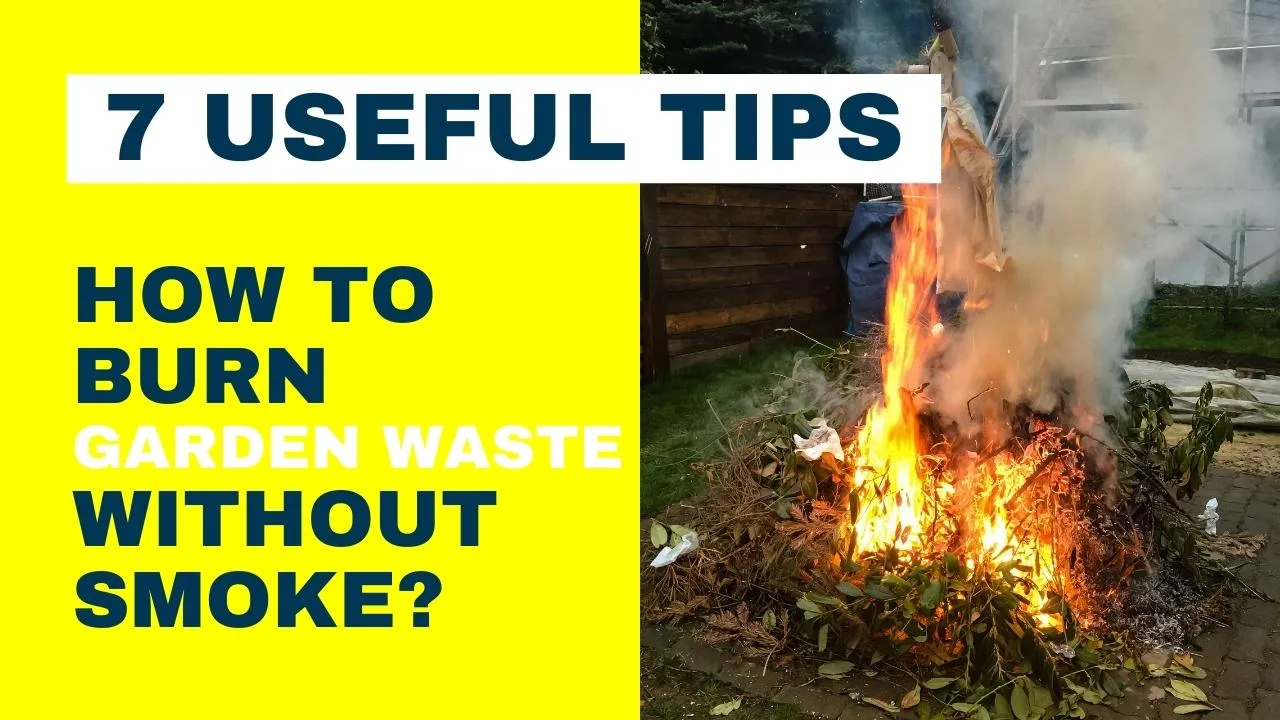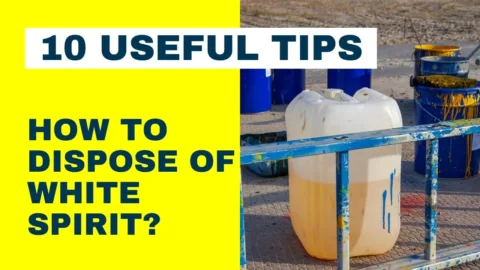How to Burn Garden Waste Without Smoke?

Tired of smoky garden waste burning?
Want to know the secret to smoke-free burning? Learn how to burn garden waste without smoke and enjoy clean, eco-friendly outdoor cleanup.
Maintaining a well-kept garden involves managing the inevitable accumulation of garden waste. While various disposal methods are available, burning garden waste can be an efficient solution if done correctly.
However, traditional burning methods often lead to the emission of harmful smoke, causing environmental and health concerns.
In this guide, we’ll explore how to burn garden waste without smoke using efficient techniques and practices. It caters to a broad audience, including homeowners, builders, landscapers, and environmental enthusiasts.
Table of Contents
Do you find the process of disposing garden waste frustrating, time-consuming, and messy? Burning might appear as a quick solution, but it can lead to air pollution and health issues.
You might be wondering how to burn garden waste without smoke or if there’s a method to achieve this with minimal smoke.
The good news is, indeed! By following a handful of straightforward steps, you can dispose of your garden waste safely and efficiently, without posing any harm to yourself or the environment.
How to Burn Garden Waste Without Smoke? 7 Useful Tips
Here are 7 useful tips on how to burn garden waste without smoke:
1. Checking the Weather: Choose the Right Time – Select the Appropriate Weather Conditions.
Certain days surpass others for efficient burning practices. Optimal burning of garden waste aligns with low winds, high pressure, and low humidity, aiding smoke dissipation.
The primary phase of garden waste burning commences with selecting the appropriate timing.
Burn garden waste during windy or dry spells escalates the risk of fire and heightened smoke. It’s best to opt for serene days featuring tranquil air for burning.
Furthermore, assess the weather forecast to verify the absence of imminent rain, which triggers copious smoke when burning damp materials.
2. Sorting Waste: Choose the Right Fuel – Only Burn Dry Garden Waste.
Commence by meticulously sorting and segregating your waste materials. Utilize organic matter like leaves, grass clippings, and minor branches for burning, but avoid larger branches and treated wood due to their potential for excessive smoke generation.
Shredding and resizing these materials into smaller fragments not only enhance combustion but also expedite the decomposition process.
To avert excessive smoke, exclusively burn garden waste that is fully dry, as damp or wet materials tend to yield more smoke. If achieving dryness is a challenge, our assistance in removing your garden waste is just a call away.
If you intend to personally burn garden waste, it is pivotal to employ the proper fuel. Exclusively employ dry wood and garden waste, avoiding plastics, rubber, or synthetic materials. Burning such synthetics can emit harmful chemicals into the air, posing serious health risks.
3. Setting Up the Burning Area: Use a Burn Pit/Site or Chiminea.
Choosing the right spot to burn is important. Pick a place far from buildings, trees, and other things. A fire pit or burn pile helps keep the fire controlled.
Good airflow helps the fire burn better and makes less smoke. You can use bricks or stones to build a fire pit or a metal barrel or fire ring. A special burn pit or chiminea for garden waste is better. Chimineas have better air, so less smoke.
Next, get the burning spot ready. Clear leaves, twigs, and branches from around the spot. Also, keep away from buildings, trees, and power lines.
4. Starting a Fire: Selecting the Correct Burning Technique – By Utilizing a Small Amount of Kindling.
To burn garden waste with less smoke, you can make a good base for the fire. First, put dry twigs and small branches at the pit’s bottom.
Next, add dry leaves and grass clippings on top of that. After that, place bigger branches and logs on the highest part, making a shape like a pyramid. This helps the fire to start and burn smoothly.
Creating a solid fire base is key for reducing smoke when burn garden waste. Begin with a layer of dry twigs and small branches at the bottom of the pit.
Then, add dry leaves and grass clippings. Finally, place larger branches and logs on the top, shaping them like a pyramid. This arrangement encourages the fire to ignite and burn evenly, resulting in a more efficient and less smoky burning process.
5. Containing the Fire: Keep It Controlled Using Ignition Techniques for Combustion with Minimal Smoke.
Keep the fire small and in one place. Big fires with lots of garden waste make more smoke. Burn a little waste at a time to make less smoke.
After you start the fire, control it to stop smoke. Don’t put too much fuel at once, or the fire gets smothered and smoky.
Add a bit of fuel often to keep the fire going well. When burn garden waste, how you do it matters. Burning in the open makes smoky fires.
Controlled burning is better. Use a fire pit or special pile with air holes. This helps control the fire and stops too much smoke.
Starting the fire well is important. Use dry things and small sticks. Don’t use gasoline or kerosene—it’s not safe and makes smoke. Use paper or dry leaves instead.
6. Monitoring and Managing the Burn or Fire
It’s important to watch the fire as it burns. If it starts to smoke, add dry wood or garden waste to help it burn better.
Don’t let the fire get too big, as this can make more fire and smoke. After you start the fire, check it often.
Add a bit of waste now and then to keep it burning evenly. Change the air and fuel as needed to stop smoky smoldering. The aim is to burn everything into ash without too much smoke.
7. Dispose of the Ashes: Handle Them the Right Way
After the fire is done, you have to get rid of the ashes the right way. Wait until they’re cool before taking them out of the fire pit. You can spread them in your garden or put them in compost. Never put ashes in a plastic bag, as they can stay hot and start a fire.
It’s important to handle ashes safely. Let them cool down before touching them. Then you can move them.
You can use ashes to help plants grow in the garden or mix them with other things in compost. Don’t put them in a plastic bag. Plastic can melt because of the heat, and it might start a fire.
Alternative Methods
While burning might seem like a good idea, it’s not always the best choice. There are other ways that are better for the environment.
Composting is a great option for things like leaves and grass clippings. It helps your soil by giving it good nutrients. If you have branches and wood, you can turn them into mulch or chips. This not only makes less waste, but it also gives you useful stuff for your garden.
There are other things you can do instead of burning. Composting is a smart choice. It helps your garden and is kind to the Earth. For branches and wood, making mulch or chips is a better idea. It’s good for the environment and your garden.
Before you decide, look into other options like composting or using green waste services. Be careful though, burning garden waste might let out things that are bad for your health and the Earth. Always check the rules in your area and follow them. We also talked about the laws for burn garden waste in the UK in a recent article.
There are different ways to handle garden waste. Burning is just one way, but it’s not always the best. Composting is a more Earth-friendly option for some things. It helps make your soil better and your plants happier.
If you have wood, you can make it into mulch or chips. This is good for your garden and lessens waste. Before you decide to burn, think about other choices like composting. Burning might not be great for the air or the Earth. Make sure you know what your area’s rules are. We talked about the UK’s rules for burning garden waste in a recent article too.
Understanding the Problem of Smoke Emissions
Before we delve into the solutions, it’s important to understand the implications of smoke emissions.
Burning garden waste improperly releases pollutants into the air, contributing to poor air quality and posing health risks.
Furthermore, many regions have regulations in place that restrict or regulate outdoor burning. Familiarizing yourself with local laws and considering the environmental impact is the first step toward responsible waste disposal.
Safety Precautions and Legal Considerations
Safety should always be a top priority when burning garden waste. Keep a fire extinguisher, water source, and safety equipment nearby.
Before burning, check with your local authorities for any necessary permits or restrictions. Adhering to regulations ensures a responsible and safe waste disposal process.
Promoting Smoke-Free Burning in Communities
As responsible stewards of the environment, it’s important to promote smoke-free burning practices within your community.
Educate neighbors, local businesses, and fellow gardeners about the benefits of controlled burning and share information on legal requirements. By collectively adopting responsible waste management, we can create a healthier environment for everyone.
Conclusion
Efficiently burn garden waste without smoke is a goal that benefits both our immediate surroundings and the planet at large. By following the techniques outlined in this guide, you can minimize the environmental impact of waste disposal and contribute to cleaner air and a healthier ecosystem.
Whether you’re a homeowner with a small garden or a business owner with larger landscaping needs, embracing these methods can help you maintain a greener, cleaner, and smoke-free environment.
Let’s take the step towards responsible waste management and enjoy the benefits of a smoke-free outdoor space.






